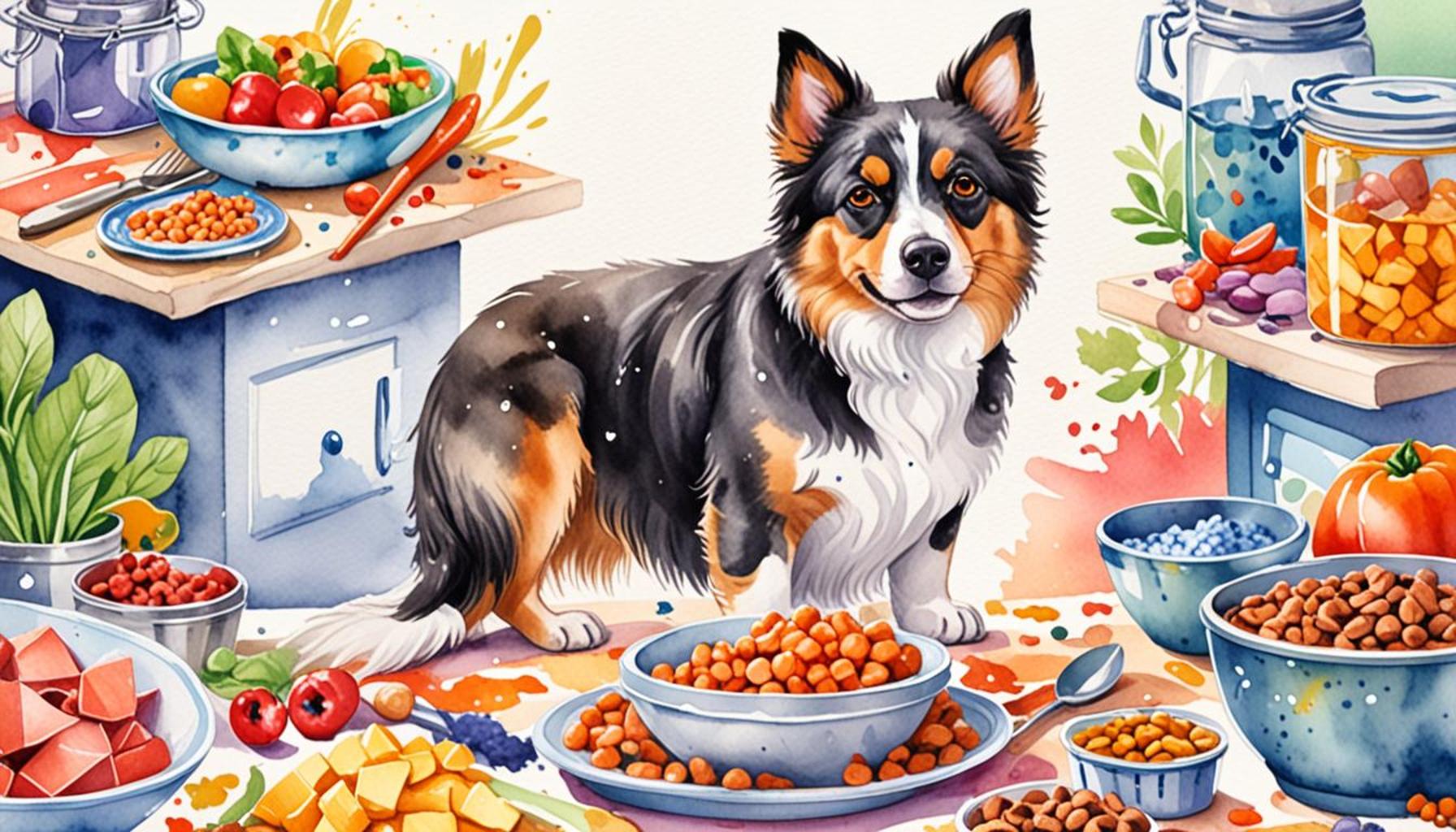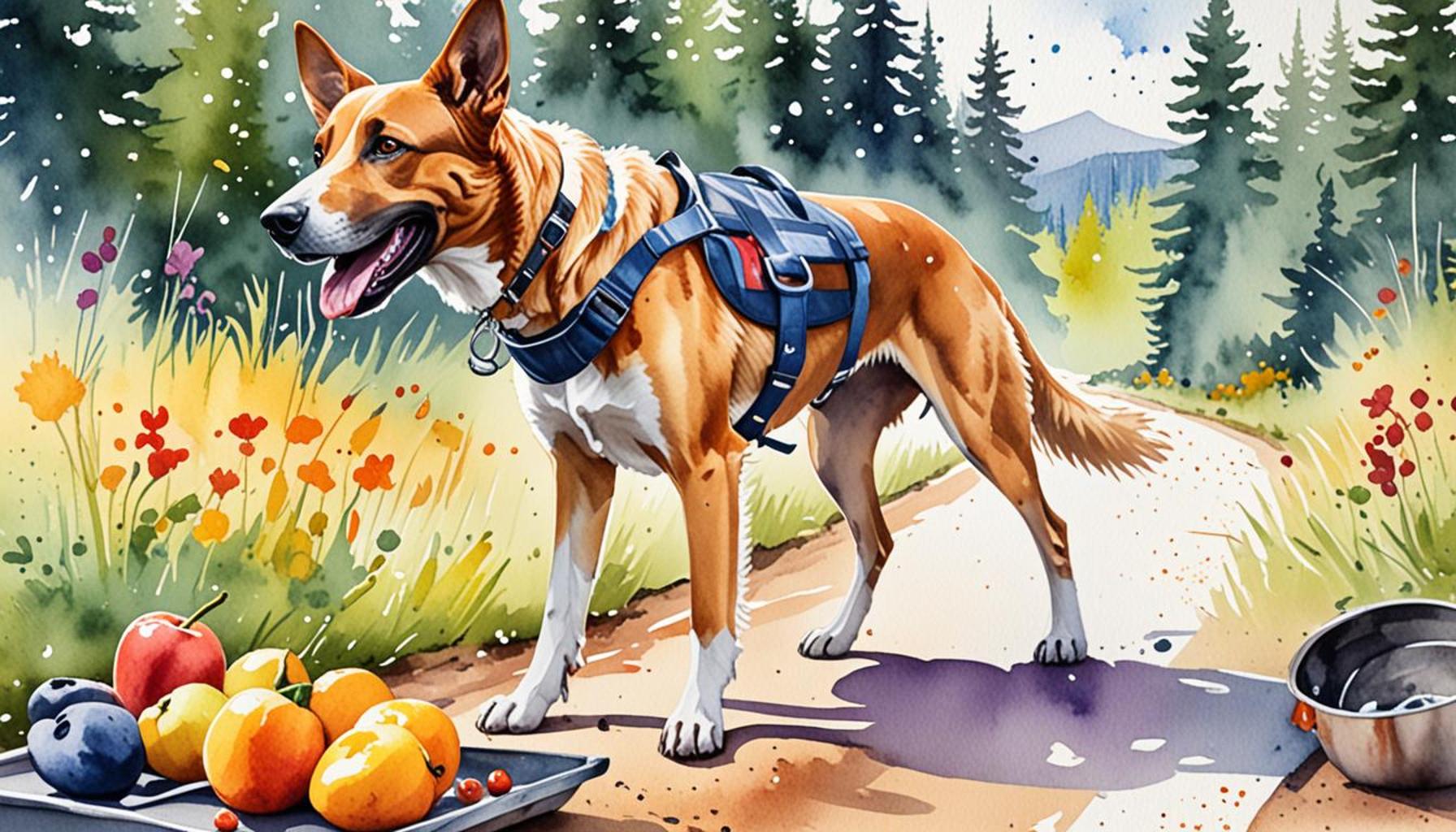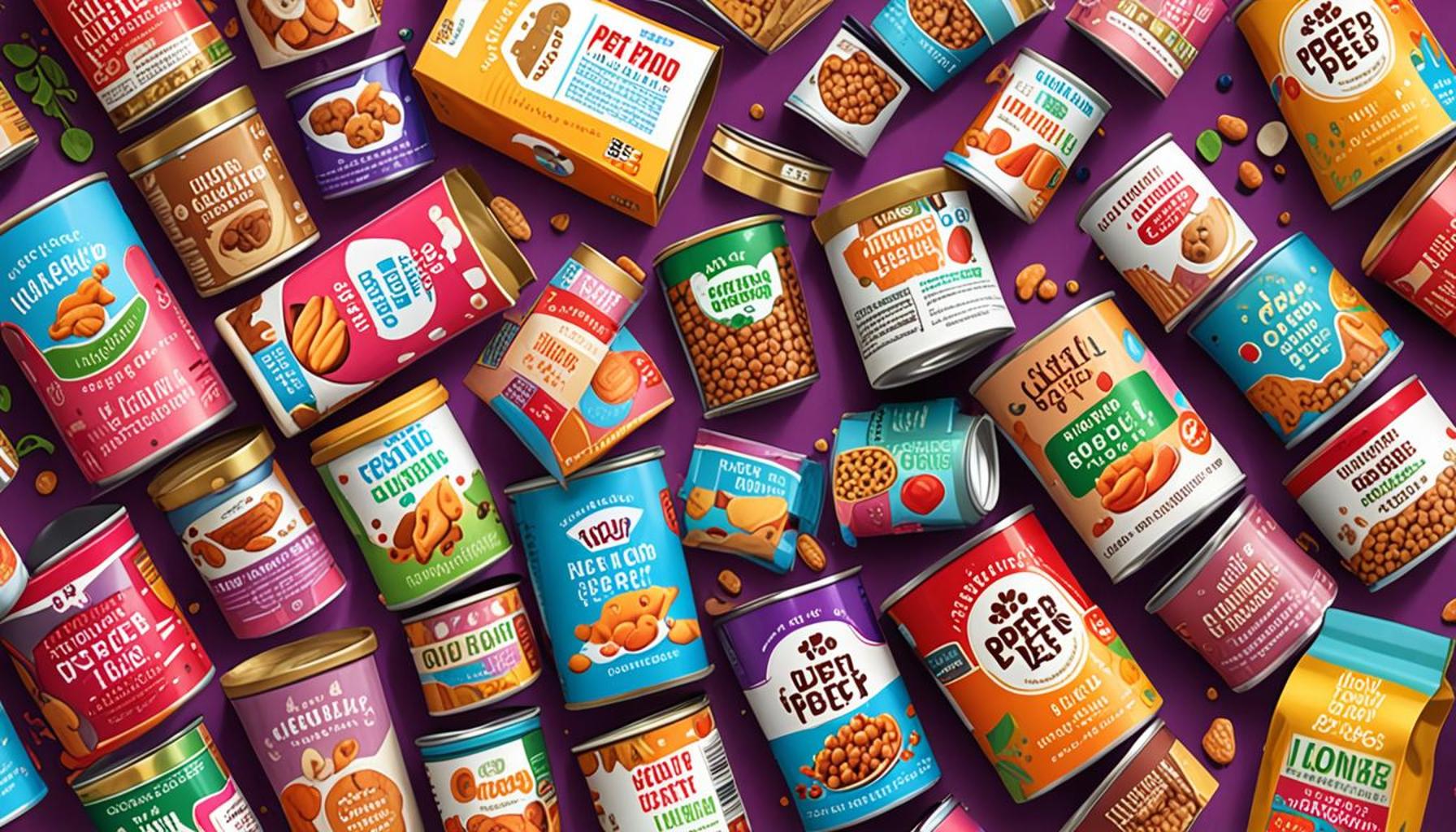Homemade Pet Food: Ensuring Nutritional Adequacy and Safety

Understanding the Components of Homemade Pet Food
Creating homemade pet food can be a rewarding experience for pet owners aiming to provide nutritious and wholesome meals for their beloved companions. As concerns regarding the quality and safety of commercial pet foods continue to mount, more pet parents are exploring the world of DIY pet nutrition. However, it is essential to understand the intricacies of crafting meals that not only cater to your pet’s taste preferences but also meet their unique dietary needs.
Nutritional Requirements for Pets
To maintain nutritional adequacy, it is crucial to be well-informed about the vital nutrients that pets require. These include:
- Proteins: Essential for growth and development, proteins can be derived from sources like chicken, turkey, beef, fish, and eggs. Including a variety of proteins can help ensure your pet gets a complete amino acid profile.
- Fats: Healthy fats, such as those from fish oil or flaxseed oil, provide energy and support brain health and skin vitality. A proper balance of omega-3 and omega-6 fatty acids is essential for overall well-being.
- Vitamins and Minerals: These are crucial for various bodily functions, including immune health and bone development. Incorporating fruits like blueberries for antioxidants and vegetables like sweet potatoes for fiber can enhance your pet’s diet.
Once you have an understanding of component nutrients, it is equally important to recognize the impact of specific ingredients. For example, incorporating lean meats not only aids in muscle health but also caters to a pet’s natural carnivorous instincts, while fruits and vegetables can provide essential vitamins and antioxidants that support long-term health.
Common Pitfalls to Avoid
When embarking on this journey, keep an eye out for common mistakes that could detract from your pet’s health:
- Neglecting specific dietary needs based on factors such as age, size, and health status: Puppies and kittens may require higher protein and fat content, while older pets may benefit from diets lower in calories but higher in fiber.
- Overlooking food safety: Just as with human food, ensuring that pet food ingredients are fresh, free of contaminants, and properly cleaned is vital to prevent foodborne illnesses.
Ensuring Safety in Food Preparation
Safety is paramount when preparing homemade pet food. Here are some essential practices to consider:

- Food Safety Practices: Always wash your hands before preparing meals and ensure that surfaces and utensils are sanitized to avoid cross-contamination.
- Proper Storage Methods: Store homemade pet food in airtight containers in the refrigerator or freezer to prevent spoilage and extend shelf life.
- Consulting with Veterinarians: Always consider seeking expert advice when drafting meal plans to ensure you are providing balanced nutrition tailored to your pet’s specific needs.
Embarking on this culinary adventure may seem daunting at first, but with diligent research and an understanding of your pet’s requirements, you can create meals that are not only safe and nutritious but also tantalizing to their taste buds. Delving deeper into nutritional guidelines and exploring various recipes can uncover the secrets to crafting delicious, home-cooked meals. Empower yourself with knowledge and take your first steps towards enhancing your pet’s health through thoughtfully prepared food.
DISCOVER MORE: Click here to learn how adoption can make a difference
Crafting Balanced Meals for Your Pet
When it comes to homemade pet food, achieving a balanced and nutritious diet for your four-legged friend is of paramount importance. Crafting meals that closely meet your pet’s requirements helps promote optimal health, energy levels, and longevity. To achieve this, pet owners need to delve into the balance of macronutrients—carbohydrates, proteins, and fats—essential for their pets.
Macronutrients in Homemade Pet Food
Each macronutrient plays a specific role in your pet’s diet:
- Proteins: The building blocks of muscle, proteins are paramount for growth and recovery. For dogs, incorporating sources like chicken, beef, and lamb can help meet high protein requirements, especially for active or growing pets. Cats, being obligate carnivores, require a diet richer in protein from animal-based sources to thrive.
- Carbohydrates: While often overlooked, carbs provide an important energy source and can aid in digestion. Brown rice, quinoa, and oats can be excellent options, offering energy without overwhelming sugar spikes. Fiber from vegetables such as green beans and peas can assist in digestive health, promoting a happy gut for your furry companion.
- Fats: Healthy fats are crucial, not only for energy but also for maintaining a shiny coat and healthy skin. Ingredients like fish oil and chicken fat can enhance the palatability of the food while offering essential fatty acids that support your pet’s overall well-being.
Understanding the specific ratios of these macronutrients is essential in ensuring that your pet receives a nutritionally adequate diet. A commonly recommended ratio is approximately 40% protein, 50% carbohydrates, and 10% fats, although individual needs may vary based on age, weight, activity level, and specific health concerns.
Unique Dietary Needs Based on Pet Species
Each pet species comes with its own set of dietary requirements. For instance, cats require significant amounts of taurine, a vital amino acid not found in plant sources, making it imperative for cat owners to prioritize meat in their homemade diets. Conversely, dogs exhibit more dietary flexibility and can benefit from a variety of food sources.
Additionally, specific breeds and age groups may necessitate different feeding strategies. Large breed puppies, for instance, may need a lower-calcium diet to prevent skeletal issues, whereas senior dogs may benefit from a diet enriched with antioxidants and fiber to support declining health.
By investing your time to learn about the unique dietary profiles of your pets and how to best meet their needs, you are setting the stage for a lifetime of health and happiness. With a focus on well-rounded nutrition, your efforts in preparing homemade pet food can lead to a stronger bond with your pet and an overall improvement in their quality of life.
| Advantage | Description |
|---|---|
| Control Over Ingredients | Homemade pet food allows owners to select high-quality, fresh ingredients that suit their pets’ dietary needs. |
| Customized Nutrition | Creating tailored recipes ensures that pets receive balanced nutrition specific to their health requirements. |
The significance of homemade pet food lies in its ability to grant owners autonomy over the ingredients used. One of the foremost advantages is the control over ingredients. This empowerment allows pet parents to avoid artificial preservatives and fillers often found in commercial pet foods, preventing potential allergies or health issues. Moreover, with the growing awareness surrounding pet nutrition, more owners are inclined to choose organic or locally sourced products. In addition to ingredient control, homemade pet food facilitates customized nutrition. Every pet has unique health concerns, and being able to address specific dietary restrictions is invaluable. For instance, pets with food allergies can benefit from carefully curated meals, which helps maintain their overall well-being. In a world where pets are cherished family members, investing effort into their nutrition is paramount.
DISCOVER: Click here to learn how adoption can make a difference
Essential Vitamins and Minerals for Optimal Health
A comprehensive approach to homemade pet food extends beyond just macronutrients; it involves ensuring that your pet is receiving all necessary vitamins and minerals essential for their well-being. These micronutrients play crucial roles in metabolic pathways and overall health, requiring pet owners to be diligent and informed when designing their pets’ meals.
Key Vitamins and Minerals
Here are some essential vitamins and minerals to incorporate into your homemade pet food:
- Calcium: Important for the development of strong bones and teeth, calcium is particularly crucial for growing puppies and kittens. Dairy products, leafy greens, and ground eggshells can be excellent sources for dogs, while cats may need calcium primarily from animal sources.
- Vitamin E: An antioxidant, Vitamin E supports the immune system and maintains skin and coat health. It can be found in nuts, seeds, and green vegetables, making these important ingredients in a pet’s diet.
- Vitamin A: Vital for maintaining healthy eyesight and skin, Vitamin A can be sourced from liver (for dogs and cats) and carrots or sweet potatoes for dogs. Cats, however, require preformed Vitamin A, primarily found in animal tissues.
- Folic Acid: Necessary for the formation of red blood cells and the synthesis of DNA, folic acid can be obtained through leafy greens and legumes, making it a valuable addition to homemade meals.
- Omega-3 Fatty Acids: These essential fatty acids, typically sourced from fish oil or flaxseed oil, promote cardiovascular health and reduce inflammation. They also enhance skin and coat condition, making them invaluable for pets with dermal issues.
To ensure your pet receives the full range of micronutrients, consider investing in a high-quality pet vitamin supplement. Consulting with your veterinarian can guide you on the right choices, particularly if your pet has specific health concerns or dietary restrictions.
Food Safety Considerations in Homemade Pet Food
As important as nutritional adequacy is, food safety cannot be overlooked in the quest for healthy homemade pet meals. Handling raw ingredients requires proper hygiene practices to prevent bacterial contamination.
- Hygiene: Always wash your hands and cooking utensils thoroughly before preparing pet food. Ensure the cooking area is clean to avoid any cross-contamination from raw animal products.
- Storage: Homemade pet food should be stored in airtight containers, ideally in the refrigerator or freezer to prevent spoilage. It’s crucial to only prepare the quantity that can be consumed within a week or two, depending on your pet’s needs.
- Cooking Meat: While some pet owners may choose to feed raw diets, cooking meat can greatly minimize the risk of pathogens. Ensure that all meats are cooked to the appropriate temperature to kill harmful bacteria.
Additionally, pet owners should be cautious about using human foods known to be toxic to animals. Ingredients like onions, garlic, chocolate, and grapes must be avoided at all costs, as they can lead to serious health complications.
By considering both nutrition and safety, you create a solid foundation for your pet’s health and happiness. With a commitment to continuous learning about dietary needs and best practices, you pave the way to crafting homemade meals that cater to a long and fulfilling life for your beloved companion.
DISCOVER MORE: Click here to find out how to keep your pet hydrated
Conclusion: A Balanced Approach to Homemade Pet Food
In the quest to provide a wholesome diet for our furry companions, homemade pet food emerges as a rewarding, yet demanding, endeavor. By actively ensuring nutritional adequacy and food safety, pet owners can foster not only a better relationship with their pets but also contribute to their long-term health and happiness. As we’ve explored, incorporating a variety of essential vitamins and minerals is pivotal to maintaining a balanced diet, one that meets the unique needs of each pet.
However, the task does not end with nutrition. Adopting stringent food safety practices is equally important—be it meticulous hygiene while preparing the meals, scrutinizing the ingredients for any toxic elements, or ensuring proper storage to prevent spoilage. By harmonizing these two aspects, pet owners can significantly reduce health risks, paving the way for a life filled with vitality and joy.
As pet nutrition science expands, so does the understanding of how ingredients impact health. Therefore, ongoing education through reputable sources—like consultations with veterinarians or registered pet nutritionists—can enhance your homemade recipes, ensuring they meet evolving dietary requirements. The journey of crafting homemade meals for your pets can be both fulfilling and enlightening, unlocking new dimensions of care and affection. By committing to informed practices, you can confidently navigate this rewarding path, providing not just food, but nourishment that embodies love and commitment for a lifetime of companionship.


